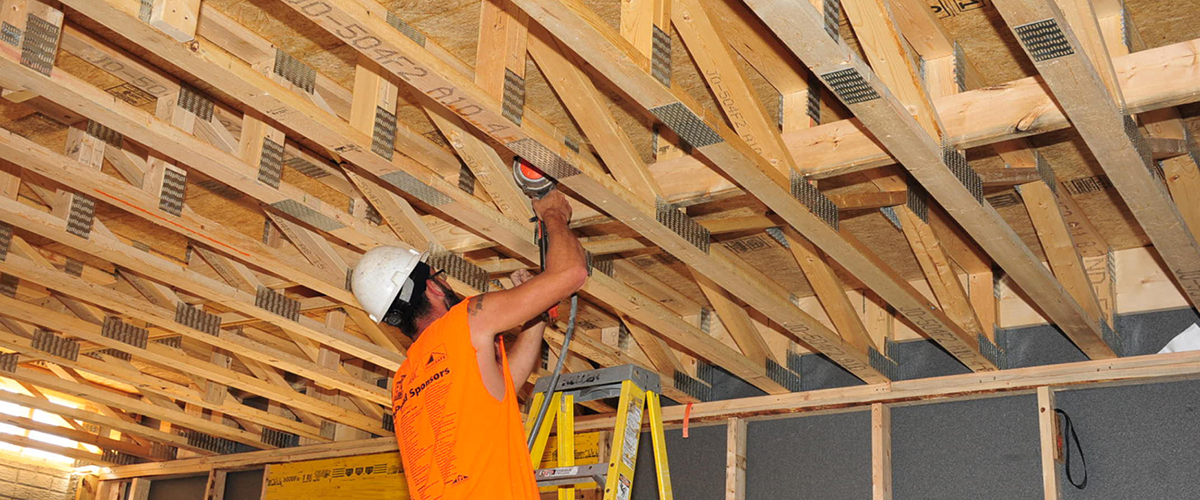Home Builders Outline Plans for Addressing Labor Shortage
Originally Published by: LBM Journal — February 9, 2022
SBCA appreciates your input; please email us if you have any comments or corrections to this article.
To ease severe worker shortages that are delaying construction timelines and raising housing costs, home builders must make fundamental changes to the way they do business, Ed Brady, CEO of the Home Builders Institute (HBI), said during a press conference at the International Builders’ Show.

Brady, a former chair of the National Association of Home Builders (NAHB) and a second-generation home builder for more than 30 years before joining HBI in 2018, said the chronic labor shortage is a “long-term structural crisis.” He issued a “call to action for an all hands and industry-wide effort to increase training, compensation, diversity and productivity.”
While construction wages are up, what prospective workers also want is to see that the residential construction industry will provide them with a solid future.
“We need to take a look at the traditional business model of home builders and ask ourselves whether it is properly structured to attract, retain and build the next generation of the nation’s construction labor force,” Brady said.
HBI’s most recent Construction Labor Market Report shows that to meet the nation’s housing demand, the residential construction industry will need to train and place a staggering 2.2 million new workers within the next three years.
Brady laid out the following steps the industry must take to attract more workers into home building:
- Recruit more women
- Train and place more minority, lower-income and second-chance youths and adults
- Provide trade skills education and training to veterans and transitioning military
- Develop a national immigration policy that works
- Change entrenched and misguided perceptions of careers in construction
On the latter bullet, Brady stated that a top priority for builders and their industry representatives is to reach out to educators, middle and high school students, and those who influence their decisions.
“Working together to engage with local schools, we can get hands-on, trade skills training curriculum into our educational institutions that will inspire thousands more young people to pursue post-graduation work in residential construction,” he said.
A Changing Workforce
Brady added that home builders should consider the behaviors that the labor market is displaying in this era of the so-called Great Resignation. “The nature of the workforce is changing. And it is not just about higher compensation, although builders will have to stay vigilant on that score to remain competitive in the labor market, while balancing the need to keep housing and homeownership affordable,” he said.
“Beyond better paychecks, people are looking for the best overall workplace environment when they choose what careers to pursue,” he said. To illustrate, Brady cited a new survey to be releasedby the Building Talent Foundation. The group’s Homebuilding Workforce Engagement Study shows that the lack of advancement, training and development exceeds even pay and benefits as the number one reason given by workers for thinking about another job.
“Today’s workers want greater respect, stability and opportunity,” he said.
Productivity is Key
NAHB Chief Economist Robert Dietz, who joined Brady at the press conference, underlined the need for gains in productivity, which has increased in the construction sector by only eight percent since 1993. He said that gains in productivity can significantly contribute to narrowing the gap between housing demand and the supply of workers.
“The only way to achieve sustainable gains for residential construction wages is to realize improvements for workforce productivity,” Dietz said. “This can be earned via new methods of operation, higher levels of training, and investment in capital and technology. Higher wages will then allow for additional recruitment in the sector.”
For its part, HBI is ramping up several major programs to address the scarcity of construction labor, according to Brady. “With the generous support of our financial partners, HBI is building and sustaining a multi-faceted attack on the problem.” He laid out key initiatives underway:
Home Building Academies
In partnership with the BuildStrong Foundation, the Brees Dream Foundation, other funders and home builder associations, HBI is creating a new nationwide network of home building academies that offer a tuition-free program open to anyone 18 years or older who is interested in construction trades training. Following a model operating in Denver, HBI opened the first facility last year in Orlando. New academies are expected to open this year in New Orleans, Houston, Phoenix, Sacramento and Charlotte.
Trades in Middle and High Schools
Working with the Home Depot Foundation, the National Housing Endowment and NAHB and its local and state associations, HBI offers students in 250 middle and high schools its industry-recognized Pre-Apprenticeship Certification Training (PACT) curriculum.
Transitioning Military Programs
HBI conducts trades training programs with the nation’s largest military installations. In a cost-free, 12-week program funded by the Home Depot Foundation, service members participate in hands-on training, earn professional certifications and receive job placement services.
Job Corps
In partnership with the U.S. Department of Labor (DOL), underserved and at-risk youth get HBI’s hands-on training each year in the building trades. Students are trained at facilities across the country and receive a pre-apprenticeship certificate using HBI’s curriculum. HBI continues to work with DOL to create innovative approaches that would serve even more students.
Justice-Involved Populations
HBI’s re-integration programs train justice-involved youth and adults. Working with state departments of corrections and juvenile justice, these programs provide students with a path to re-entry and success.
Online Learning System
HBI’s CTEtechWorks is an internet-based learning system for residential construction, especially valuable in the pandemic era. The curriculum enables continuing technical educators to expand access to trades training. The system currently has 16,000 students learning online.
Community Initiatives
HBI works with the StandTogether Trust, West Fraser, 100 Black Men of America, NAHB and other partners on initiatives that are fostering a new and more diverse generation of skilled workers.
